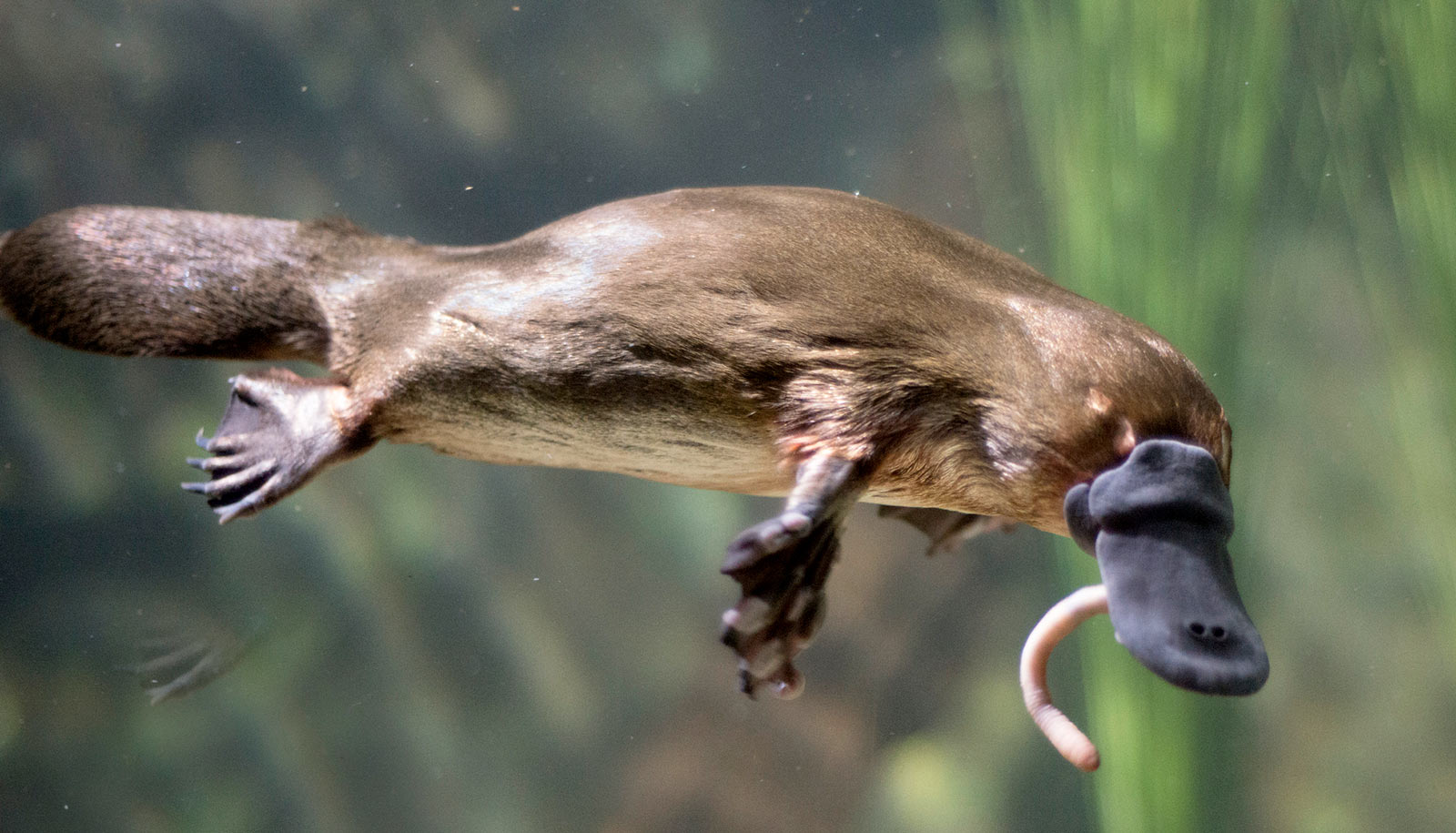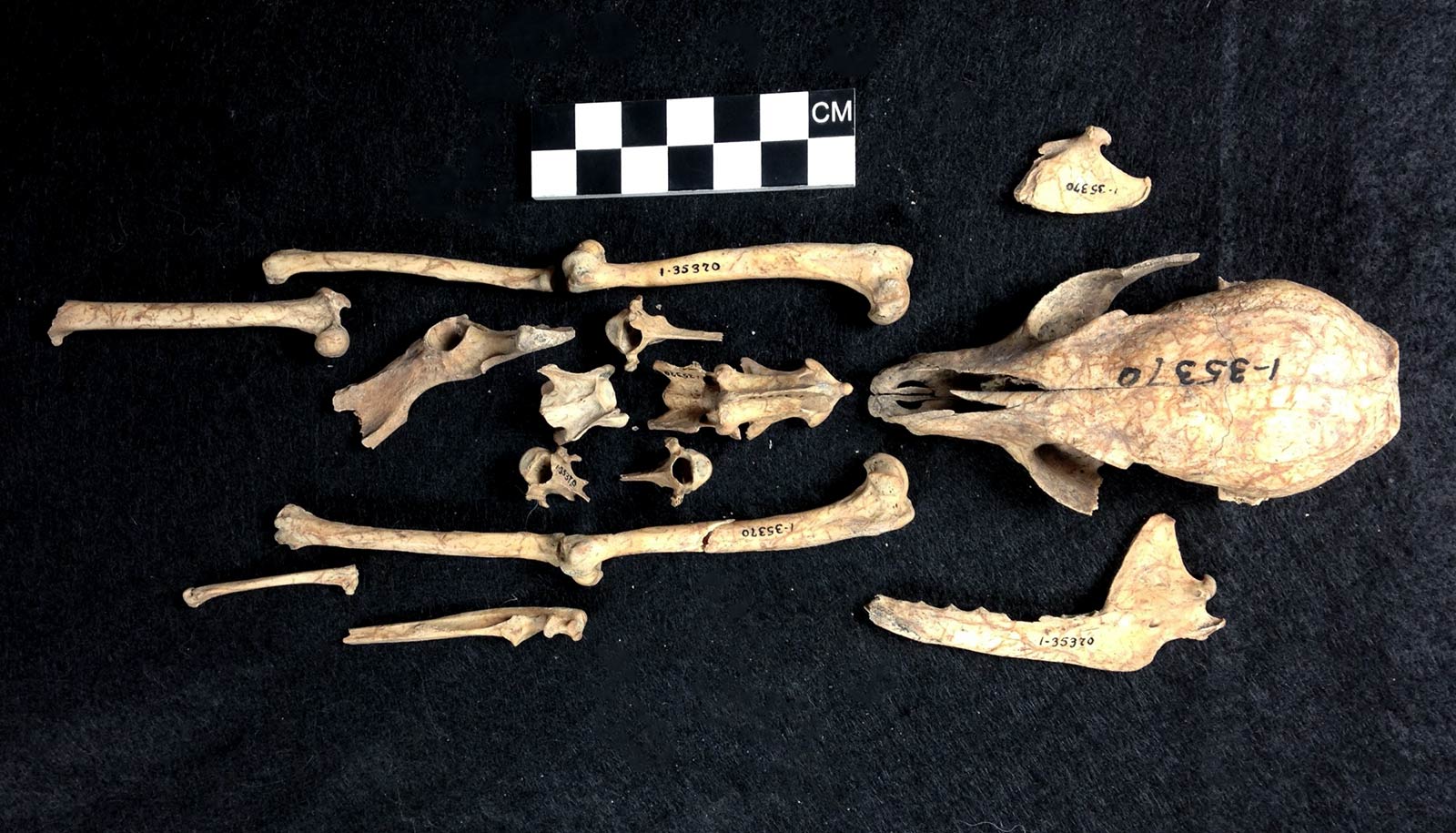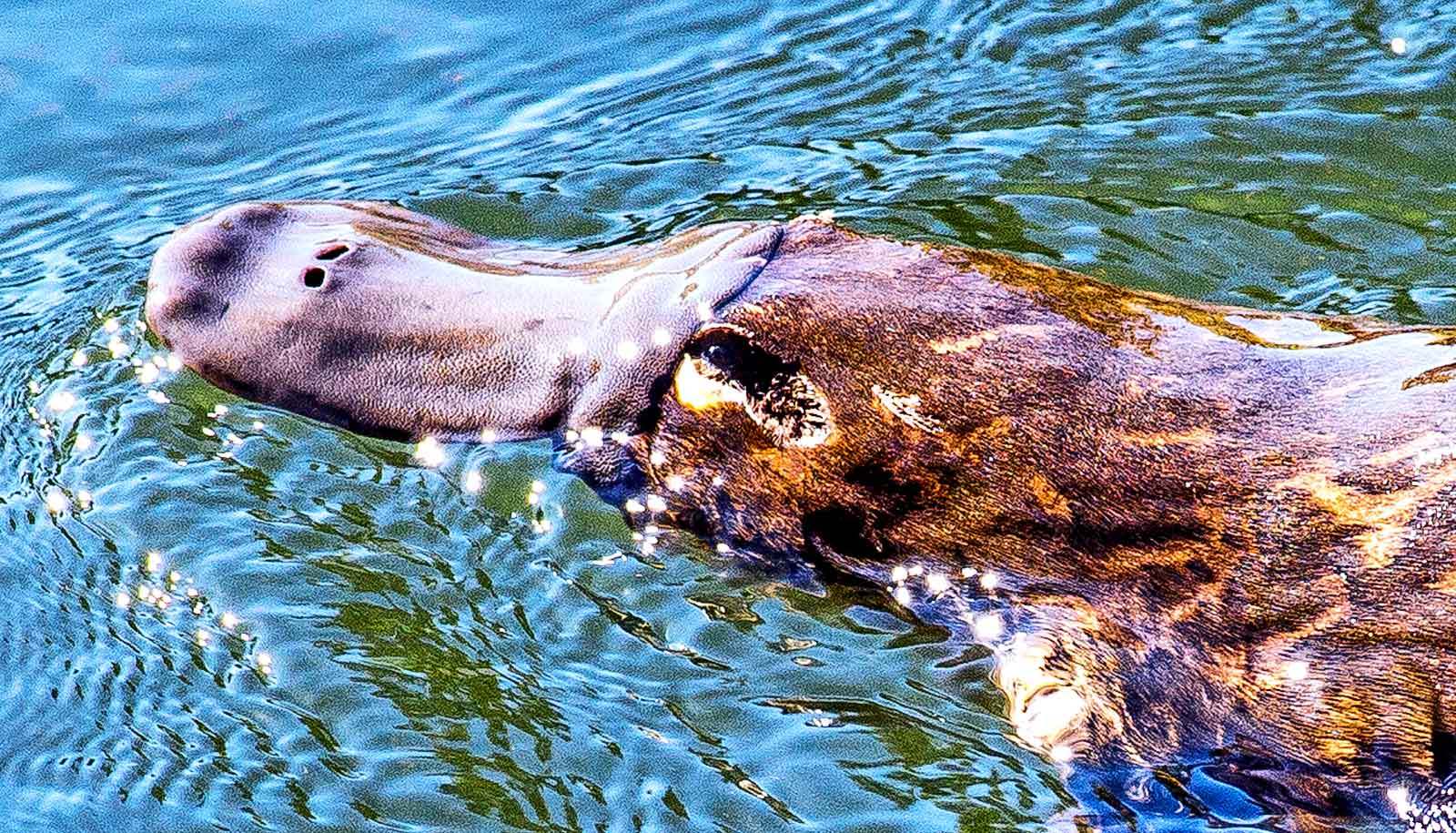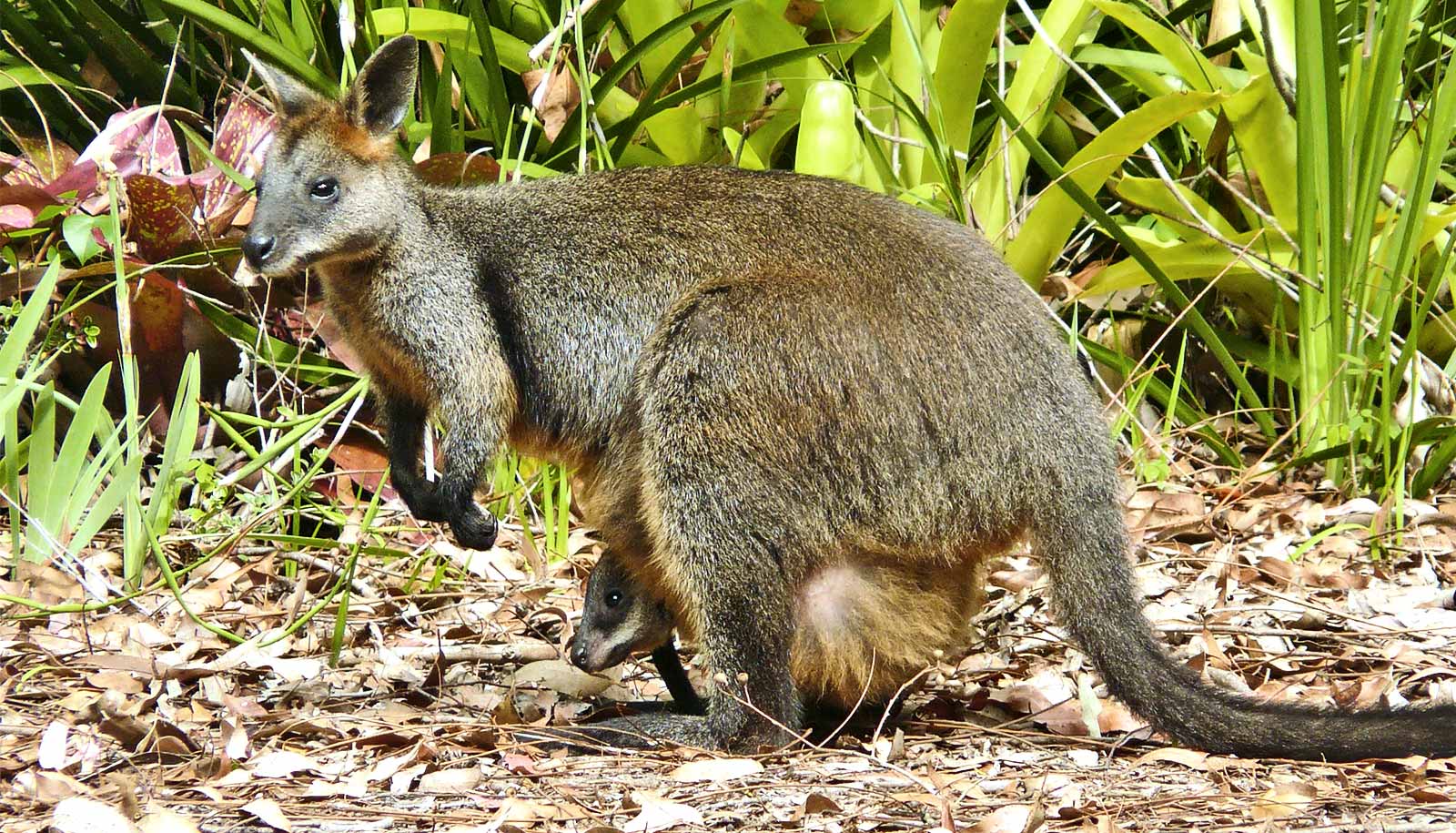Mapping the complete genome of the quirky duck-billed platypus reveals how it became what many consider the world’s oddest mammal.
Australia’s beaver-like platypus exhibits an array of bizarre characteristics: it lays eggs instead of giving birth to live babies; it sweats milk; has venomous spurs; and is the only animal to have 10 sex chromosomes. It has baffled scientists ever since Europeans first came upon it in the 1700s.
“The complete genome has provided us with the answers to how a few of the platypus’ bizarre features emerged. At the same time, decoding the genome for platypus is important for improving our understanding of how other mammals evolved—including us humans,” says Guojie Zhang, professor in the biology department at the University of Copenhagen.
“It holds the key as to why we and other Eutheria mammals evolved to become animals that give birth to live young instead of egg-laying animals.”
The platypus lays eggs and nurses its babies
The platypus belongs to an ancient group of mammals—monotremes—which existed millions of years prior to the emergence of any modern-day mammal.
“Indeed, the platypus belongs to the Mammalia class. But genetically, it is a mixture of mammals, birds, and reptiles. It has preserved many of its ancestors’ original features—which probably contribute to its success in adapting to the environment they live in,” Zhang says.
One of the platypus’ most unusual characteristics is that, while it lays eggs, it also has mammary glands used to feed its babies, not through nipples, but from milk that it sweats from its body.
During our own evolution, humans lost all three so-called vitellogenin genes, each of which is important for the production of egg yolks. Chickens on the other hand, continue to have all three.
The new study, published in Nature, demonstrates that platypuses still carry one of these three vitellogenin genes, despite having lost the other two roughly 130 million years ago, which allows it to continue to lay eggs. The platypus isn’t as dependent on creating yolk proteins as birds and reptiles, since it produces milk for its young.
In all other mammals, casein genes have replaced vitellogenin genes. Casein genes are responsible for our ability to produce casein protein, a major component in mammalian milk. The new research demonstrates that the platypus carries casein genes as well, and that the composition of their milk is similar to that of humans, cows, and other mammals.
“It informs us that milk production in all extant mammal species has been developed through the same set of genes derived from a common ancestor which lived more than 170 million years ago—alongside the early dinosaurs in the Jurassic period,” Zhang says.
Instead of teeth, platypuses have two horn plates they use to mash their food. The genome mapping shows the platypus lost its teeth roughly 120 million years ago, when four of the eight genes responsible for tooth development disappeared.
10 sex chromosomes
Monotremes have 10 sex chromosomes, with five Y and five X chromosomes. That compares to humans—and every other mammal on Earth—that have two, the X and Y chromosome system in which XX is female and XY is male.
Researchers can now suggest that these 10 sex chromosomes in the ancestors of the monotremes organized in a ring form which was later broken away into many small pieces of X and Y chromosomes.
The genome mapping reveals that the majority of monotreme sex chromosomes have more in common with chickens than with humans. It also shows an evolutionary link between mammals and birds.
Source: University of Copenhagen



